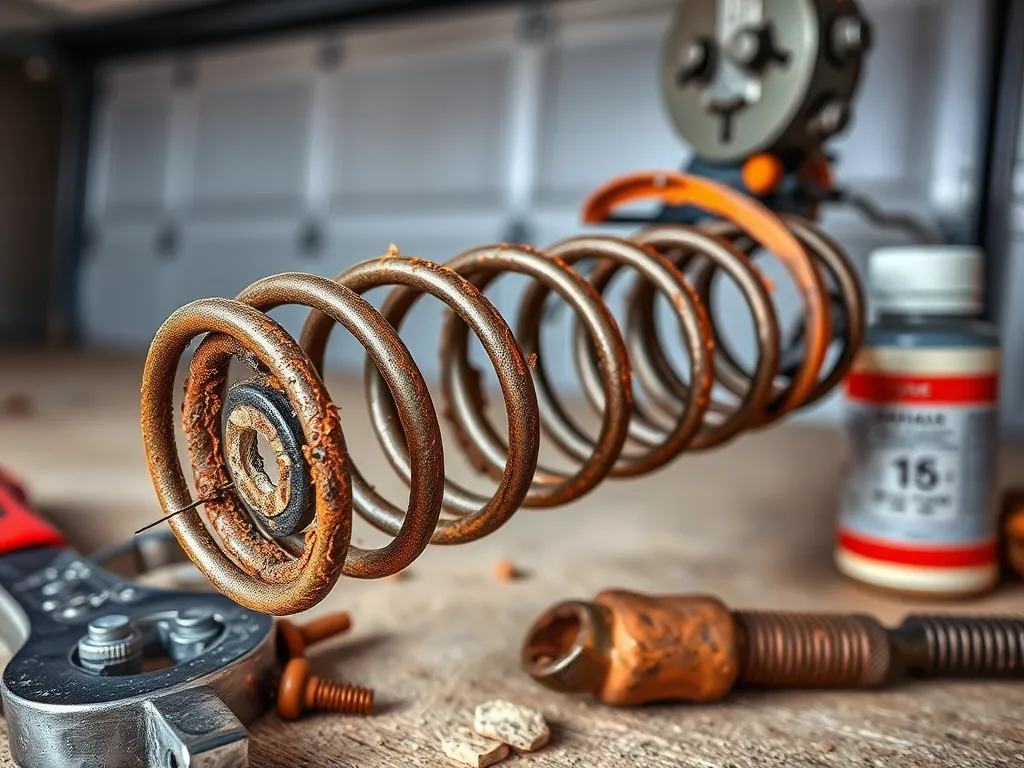Recognizing Signs of Wear and Tear in Garage Door Springs

Garage Door Maintenance: Essential Tips for Longevity and Safety
Garage door maintenance is a crucial aspect of home ownership that often gets overlooked. A well-maintained garage door ensures safety, improves functionality, and extends the lifespan of the door and its components. Regular checks and upkeep prevent minor issues from escalating into costly repairs, making it vital to establish a maintenance routine for your garage door.
Inspecting for cable wear is crucial, as damaged cables can jeopardize the safety and functionality of your garage door.
Proper garage door maintenance involves inspecting all parts, lubricating moving mechanisms, and being vigilant about wear and tear signs. A proactive approach will also enhance the door's performance and provide peace of mind for homeowners. This article outlines essential maintenance tips, signs of wear, causes of wear in garage doors, and the importance of professional inspections.
Homeowners should be aware of spring fatigue signs, as early detection can prevent serious malfunctions and ensure long-lasting door performance.
One of the key elements of garage door maintenance is recognizing when repairs are necessary. Regularly assessing the condition of the springs, cables, and other moving parts can help avoid unexpected breakdowns. Homeowners should familiarize themselves with common signs of wear and enlist professional help when needed, ensuring that the garage door operates safely and smoothly.
Additionally, garage door maintenance not only contributes to the safety of your home but also improves energy efficiency. A well-operating garage door can help maintain a stable temperature within your garage, reducing heating and cooling costs. By taking the time to care for your garage door, you ultimately enhance the overall value of your property.
In conclusion, garage door maintenance is a vital practice that should not be neglected. By understanding the importance of maintenance, recognizing signs of wear, preventing potential issues, and knowing when to seek professional help, homeowners can ensure their garage doors function optimally for years to come.
Common Signs of Wear and Tear
One of the most apparent signs of wear in garage doors is sagging or uneven operation. If you notice that your door doesn't close evenly or hangs lower on one side, it may require realignment or replacement of components.
Regular maintenance is essential to prevent rust formation on garage doors, which can lead to costly repairs.
Another indication of wear is a noisy operation when opening or closing the garage door. Unusual sounds like grinding, squeaking, or banging can signal that the moving parts may need lubrication or that there are deeper mechanical issues to address.
Difficulty in lifting the door manually is another common sign of wear. If you find it increasingly challenging to open the garage door manually, it may indicate a problem with the springs or cables, which could require immediate attention.
Visible fraying or rust on cables is a serious sign of wear and tear. Cables that are fraying or show rust are at risk of snapping, which could pose a significant safety hazard and should be replaced immediately.
Inconsistent door alignment when closed also signals wear or misalignment in the tracks. If the door doesn't seal entirely when closed, it could lead to energy inefficiency and security problems.
Causes of Wear in Garage Door Springs
Overuse and frequent operation are primary causes of wear in garage door springs. Repeatedly opening and closing the door can take a toll on its mechanisms, leading to eventual failure if not maintained properly.
Environmental factors can also affect the materials used in garage door systems. Extreme temperatures, humidity, and corrosion can all contribute to wear and shorten lifespan.
Improper installation or alignment of garage door springs can lead to premature wear. Ensuring that springs are installed correctly and balanced is crucial for their longevity.
A lack of regular maintenance further accelerates wear in garage doors. Neglecting inspections and maintenance can allow minor issues to develop into significant problems, impacting the entire door system.
Lastly, general aging of components naturally contributes to wear over time. As materials age, they become less effective, highlighting the importance of regular upkeep and timely replacements when necessary.
Maintenance Tips for Garage Door Springs
Regular inspections are recommended every 6-12 months to assess the condition of garage door springs. This helps detect early signs of wear and enables timely interventions.
Lubrication of springs and cables is essential for smooth operation. Appropriate lubricants should be used to reduce friction and wear on the components, usually recommended every six months.
Keeping tracks clear of debris is vital for proper functionality. Periodically check the tracks for dirt or obstructions that could impede the door's movement and lead to wear.
It's important to check the balance of the door regularly. An unbalanced door can place excess strain on the springs, leading to faster wear and possible malfunction.
Consider professional servicing advice as part of your maintenance plan. Professionals can provide insights and recommendations based on their experience, ensuring that your garage door remains safe and functional.
When to Replace Garage Door Springs and Cables
Signs indicating immediate replacement include significant rust, fraying cables, or broken springs. If any of these symptoms are present, replacing the components as soon as possible is critical to avoid safety risks.
Cost-effectiveness of repairs should be evaluated against replacement. If repair costs are high, it may be wiser to replace old components to ensure long-term reliability and safety.
Safety risks of worn-out components cannot be underestimated. If garage door springs or cables fail, it can lead to injuries or accidents, emphasizing the importance of timely replacements.
Hiring a professional vs. DIY replacement is a decision that should be made cautiously. While DIY may save costs, professional installation ensures that the job is done correctly and safely.
Consider the timeline for replacing aging garage door parts. As components age, they may become increasingly prone to failure, necessitating proactive replacement to prevent more significant issues down the line.
The Importance of Professional Inspection
Benefits of hiring a professional technician include expert assessments and recommendations for your garage door's condition. Professionals can spot issues that may not be visible to the untrained eye, ensuring comprehensive care.
During an inspection, expect a thorough examination of all components, including springs, cables, tracks, and the opener. Understanding what to expect can help you prepare for the process and discuss findings with the technician.
Common issues discovered during inspections often include misalignments, worn-out springs, and debris-clogged tracks. Early detection of these problems can prevent costly repairs later.
Choosing a qualified inspector is vital. Look for licensed professionals with positive reviews and experience in garage door maintenance to ensure you receive competent service.
Frequency of professional check-ups for garages should ideally be every 1-2 years. Regular assessments contribute to a longer lifespan and safer operation of your garage door.
